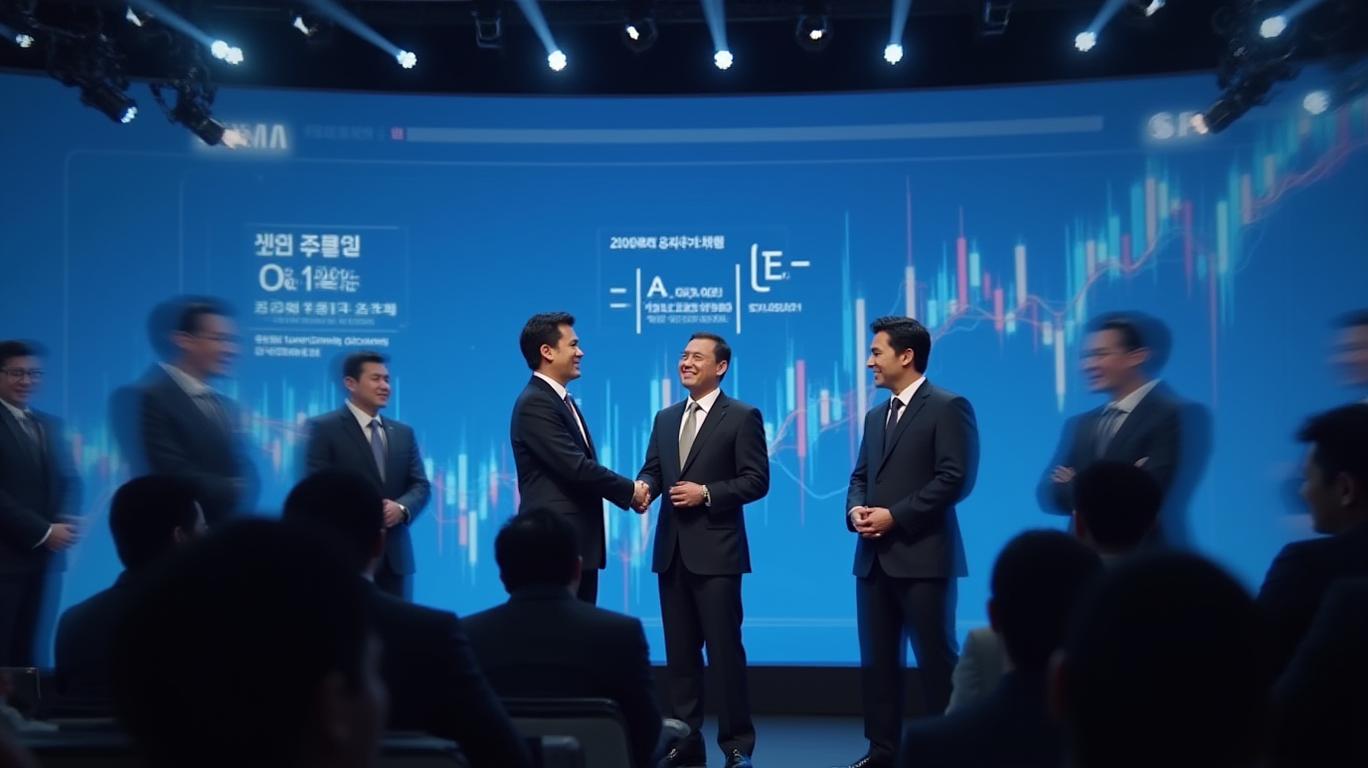AInvest Newsletter
Daily stocks & crypto headlines, free to your inbox
Samsung Electronics has reported a 10% year-on-year increase in revenue for the first quarter, reaching a record high of 79.1 trillion Korean won (approximately $554 billion). This marks the highest quarterly revenue in the company's history. The operating profit for the quarter was 6.7 trillion Korean won, a 1.5% increase year-on-year, surpassing analysts' average expectations by 4.7%. The semiconductor business, in particular, showed strong performance, contributing significantly to the overall revenue growth. The storage business also saw a robust rebound, further bolstering Samsung's financial results. This performance highlights Samsung's continued dominance in the global semiconductor market and its ability to adapt to changing market conditions. The company's strategic investments in advanced technologies and its strong market position have enabled it to achieve these impressive results.
The growth in Samsung's revenue can be attributed to the strong sales of its flagship smartphone series, the Galaxy S25, as well as the resurgence in demand for storage chips. The semiconductor business, which includes memory chips, has been a key driver of this growth. The company's memory business saw a near-doubling in revenue compared to the same period last year, making it a core growth engine for Samsung. The increase in revenue from the memory business was primarily driven by the expansion of DRAM sales for server use and the fulfillment of additional demand for NAND flash memory as prices hit rock bottom. The surge in demand for AI servers has also boosted orders for high-end products like high-bandwidth memory (HBM).
However, Samsung acknowledged that its
sales have been impacted by U.S. export controls on AI chips and the transition period for new product iterations, leading to delays in some demand. Despite this, the company remains optimistic about the future of its storage business. Samsung expects that the average selling price of storage chips will continue to face downward pressure, but it anticipates that the demand for high-value-added products, such as HBM and 12-layer or higher NAND, will improve profitability in the second half of the year. The company plans to expand its HBM production capacity and accelerate the transition to 1b nanometer DRAM processes.Samsung maintains its expectation for a recovery in the semiconductor industry for the full year, but it warns of uncertainties stemming from geopolitical tensions and a slowing global economy. The company anticipates that if trade frictions ease, the momentum for business improvement in the second half of the year will be further released, with AI server-related businesses expected to contribute more than 30% of the incremental profit from the chip business. The ongoing competition in the storage chip market, driven by AI advancements, is shifting from a technological race to a comprehensive commercial battle. Samsung's ability to regain its leadership position through the mass production of HBM3E will be a critical indicator of the evolving landscape in the semiconductor industry.

Stay ahead with real-time Wall Street scoops.

Dec.26 2025

Dec.26 2025

Dec.26 2025

Dec.26 2025

Dec.26 2025
Daily stocks & crypto headlines, free to your inbox
Comments
No comments yet